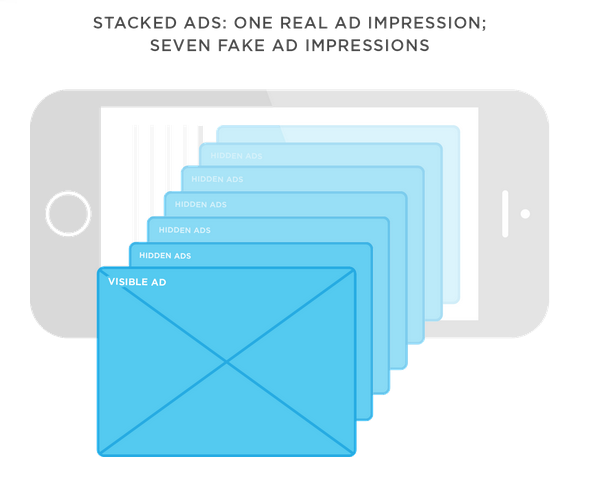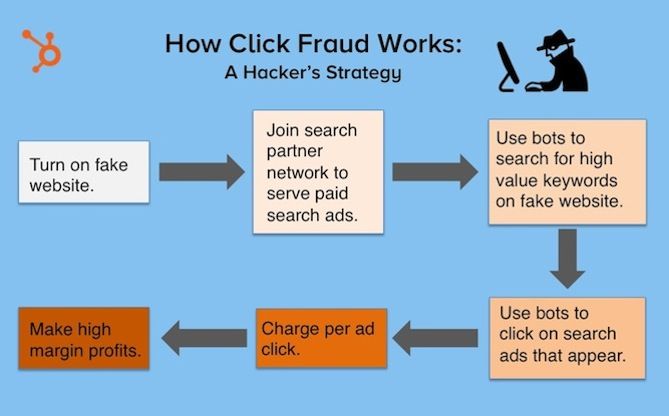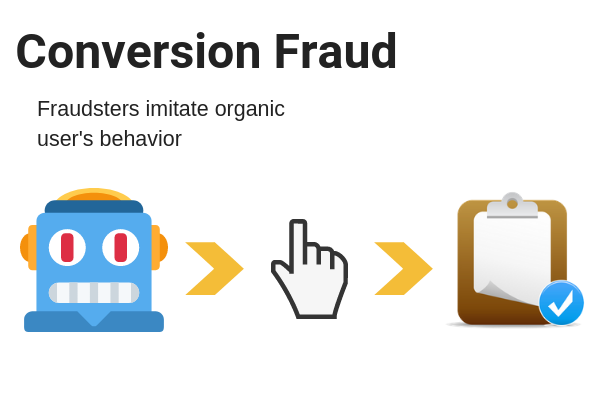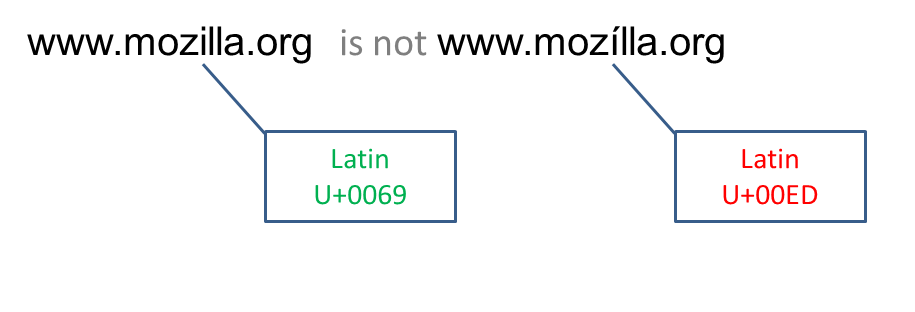Not-So-Smooth Criminals: Fighting Ad Fraud

Today’s films usually portray scammers as slick people with quick reflexes and soothing voices. They usually hang out at casinos and specialize in conning rich people in one way or another.
But the reality couldn’t be any further.
Fraudsters come in all shapes and sizes. They employ a huge variety of channels and techniques to extract funds from regular businesses. And when these fraudulent schemes disrupt activities such as your marketing efforts, they become much more than a nuisance.
What is Ad Fraud?
Ad fraud is the process of generating illegitimate charges for advertisers through deceitful interactions such as clicks, impressions, or video views. These fraudulent interactions are generated by humans, automated scripts called bots, or a combination of the two.
And here’s a more down-to-earth definition: Ad fraud is a type of scam in which the scammer fools advertisers into paying for something that is worthless to them, such as fake traffic, fake leads or misrepresented and ineffective ad placement. (Definition by What Is)
It’s also worth noting that all instances of ad fraud have a responsible party. There is always another entity involved, either a competitor trying to disrupt your campaign or a criminal looking to extract funds from your campaign. Regardless of the source, ad fraud is extremely damaging to any company as it results in non-revenue generating clicks.
Although they may still have an impact, most competitors usually rely on simple mechanisms to conduct ad fraud. For instance, they may click on your ads using different devices, but there is a limit as to how many they are likely to use.
On the other hand, criminal organizations and unethical competitors use more specialized means. They can either employ bots or hire shady operations known as click farms.
What’s more, professional fraudsters can set up fake websites and increase their stats through false traffic. Then, they enter legitimate networks and use bots or click farms to interact with a company’s ads in order to create false charges.
Click Farms

Typical click-farm workstation setup, where a worker operates several fake social media accounts on several smartphone devices. Image by Ali Cheaib @ Medium
Click farms are operations designed to produce fraudulent clicks and other interactions. These establishments often consist of a few people using dozens to hundreds of devices. According to the Association of National Advertisers (ANA), “there are click farms that employ actual humans to fill out forms, make calls and perform other actions we typically assume bots can’t do.”
Bots
Bots are pieces of software designed to conduct basic ad fraud through simple interactions. These may include clicks, impressions, and video views, but they can still generate a monumental loss of marketers around the globe.
The main problem with bots is that the technology is advancing at an alarming pace. While old bots were designed to create interactions that could be easily spotted, modern fraud tools can take over a regular person’s device and conduct seemingly legitimate interactions through there.
Bot traffic has become such a big problem that the ANA, in association with White Ops, released a study known as The Bot Baseline: Fraud in Digital Advertising.
In the 2014 edition, the study points out that “bot suppliers actively disguise bot traffic during campaign monitoring” so they can operate incognito for extended periods of time without advertisers finding out!
Types of Ad Fraud
Ad fraud is an umbrella term because it’s used to describe different types of activities. There are dozens of known methods and even more unknown techniques that fraudsters can employ. Here’s a description of the most common types of ad fraud:
Impression and Click Fraud
Impression and click fraud are among the most common types of digital ads scams. But, they can also cost advertisers millions of dollars. As the name indicates, this type of ad employs bots or illegitimate human users to click on or view ads and charge advertisers for it.
Conversion Fraud
Conversion fraud is a variation of the click fraud, but what differentiates conversion fraud from the click one is that it’s much harder to detect. Fraudsters aim to maintain completely normal traffic patterns in order not to raise the alarm. Bots imitate regular customers’ behavior and follow the flow. As soon as advertisers start to check the leads, that’s when the truth comes out. Very often all the leads have the same address and phone number.
Here’s a typical example of the conversion fraud, a user (fraudster) fills up the form, installs apps – does everything a normal user would do. But advertisers can’t earn from that because these conversions don’t lead to real actions or purchases.
Ad Stacking
Ad stacking is the practice of placing several layered adverts on the same area of a website. Only the top ad is visible, but unscrupulous platforms still charge several advertisers for the impression.

Image by Kochava
Pixel Stuffing
Ads may be placed inside of a pixel, which makes them invisible to users. Nevertheless, advertisers are charged for these ads even when they have to chance of converting.
Domain Spoofing
Networks and advertisers usually have strict requirements before employing publishers. However, unethical parties can disguise a site’s traffic and make it look great when it’s actually not, a process that’s often referred to as domain spoofing.
The Current State of Ad Fraud
Ad fraud is a massive problem, to their point that even the biggest platforms in the world have started to address it. Networks such as Google have started offering refunds for people that identify fraud on their campaigns.
Scott Spencer, the company’s director of product management, admitted that “when [Google isn’t] able to catch invalid traffic before it impacts advertisers… it hurts [the company], even if we’re not responsible.”
Because of this, all responsible networks need to review their fraud prevention strategies and assure a safe environment for their advertisers.
Is Ad Fraud Illegal?
Generally speaking, fraud is illegal in most areas of the world. Ad fraud is no exception. The big problem is that operations like click farms and criminals that specialize in ad fraud have learned to effectively avoid the authorities.
Some of these use a series of proxies and other technologies that help hide their location. Others simply choose to set up shop in a country where the authorities either don’t understand or don’t have the resources to fight complex fraud structures.
The Cost of Fraudulent Ads
Unfortunately, there are no exact statistics on ad fraud, so calculating exact losses is impossible at the time of writing. That said, some pundits estimate that ad fraud cost more than 7 billion US dollars in 2016 alone.
The forecasts for 2018 are even bleaker, with some entities estimating losses north of $19 billion. And, if the right tools are not set in place, losses are expected to exceed $50 billion by the year 2025.

The graph presents information on the estimated cost of digital advertising fraud worldwide in 2018 and 2022. According to the source, fraudulent, nonhuman traffic involvement in digital advertising in 2018 was estimated to incur losses of 19 billion U.S. dollars to advertisers worldwide.
Organizations Spearheading the Fight
The widespread of ad fraud has led to the creation of different programs and entities that aim to eliminate fraud and restore internet transparency.
The Trustworthy Accountability Group, also known as TAG, is among the leading programs created by four well-established entities. These are the ANA, the American Association of Advertising Agencies (4A’s), and Interactive Advertising Bureau (IAB).
In their website, the founders state that “TAG was created with a focus on four core areas: eliminating fraudulent digital advertising traffic, combating malware, fighting ad-supported Internet piracy to promote brand integrity, and promoting brand safety through greater transparency.”
What’s Left for Advertisers and Honest Publishers?
One of the biggest challenges with click fraud is that advertisers need to focus on yet another area to make sure they are getting the most bang for their buck.
Savvy marketers have learned that choosing a network that provides security mechanism can help lower the risk associated with ad fraud. Not to mention the fact that they can also reduce the amount of work they have to put in.
Stay tuned into our next blog in this series to learn how PropellerAds cleans the traffic. We’ll go over the different tools we use to reduce instances of click fraud and create a safe marketing ecosystem for all of our members.



